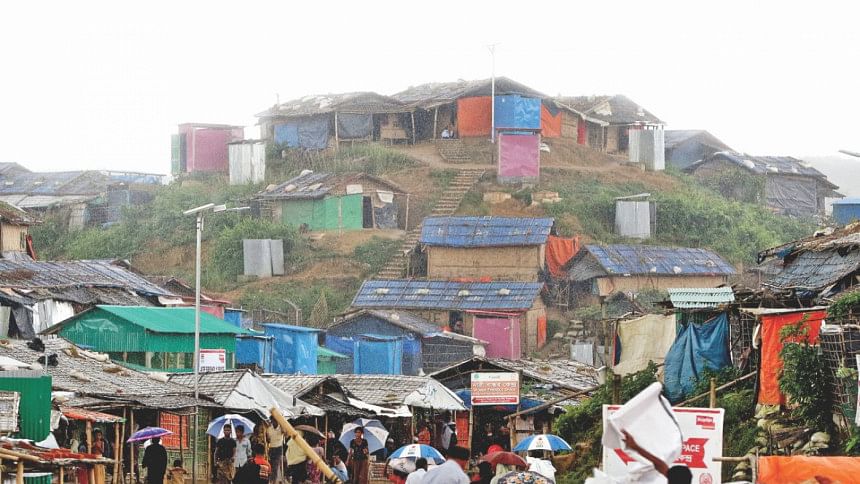Editor's Note

They waded through creeks, thickets of vegetation, and hills in search of safety, fleeing what would later be described, by the United Nations, as a "textbook example" of ethnic cleansing. In the span of a few months, over 700,000 Rohingya refugees fled to Bangladesh escaping a brutal crackdown by the Myanmar army.
In the face of the unprecedented influx, Bangladesh's response was both magnanimous and in the end magnificent. The overwhelming challenge was soon turned into a disciplined response. Government institutions, including the army, came in with crucial supplies and, in coordination with the NGOs, provided a crucial immediate response to the massive humanitarian crisis. The much-needed international help proved crucial.
The world saw and appreciated the role of this resource-scarce country responding to the refugee crisis, putting to shame many European countries reacting so cruelly to their own refugee crisis. Prime Minister Sheikh Hasina earned the respect of the whole world for the fundamental humanity of her response, supported by the people of Bangladesh.
As we mark the first year of the Rohingya refugee crisis we realise that it has been a challenging year for the refugees, who, having lost everything of value to them, are now having to build temporary lives in a land that is not theirs; it has been challenging, too, for the government of Bangladesh as well as national and international institutions working on the humanitarian crisis to house and accommodate the needs of a population of 700,000 in a 12 square mile area.
The past year has not been easy—neither for the refugees, nor for those assisting them. A process complicated by the knowledge that there is no end in sight to the suffering of the most persecuted community in the world, with diplomatic deals regarding repatriation, having failed time and time again in the past.
In the coming pages, we take you through a year of hosting the refugees. We explore how the camps have expanded over the past months and how these operate on a day-to-day basis. We take a look at the stories of Rohingya women who were raped in the violence in Rakhine and gave birth to children in Bangladesh, and investigate cases of trafficking of young women and children from the camps. We examine the status of repatriation and refugees' concerns over the process. We scrutinise the social and economic impact of the refugee population and the camps, on the district of Cox's Bazar in general, and the flourishing black market of relief items that has sprung up in the vicinity of the camps in Ukhia, in particular. We also delve into how the vast number of aid agencies and humanitarian organisations, together with the government, are coordinating the humanitarian response for over a million refugees.
This issue is part of a long-term campaign to document and archive the plight of the Rohingya—their lives, vulnerabilities, hopes and long wait for justice. We had brought out a special issue titled "In the Shadow of Violence" on October 13, 2017, after the influx began; with this current issue, we want to reflect on progress made and the challenges that still remain. We plan to continue our documentation in the years to come, with the hope that, soon, we can write about their safe journey back home to Myanmar.
MAHFUZ ANAM
Editor and Publisher
The Daily Star

 For all latest news, follow The Daily Star's Google News channel.
For all latest news, follow The Daily Star's Google News channel. 



Comments